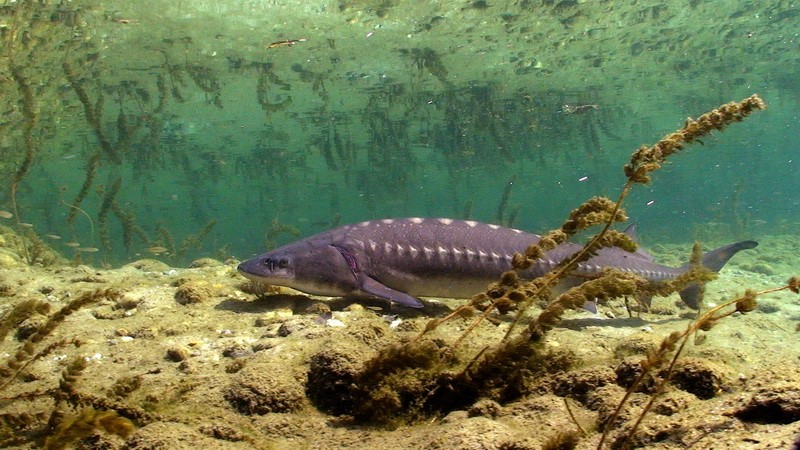MEASURES - WWF’s Living Planet Report reveals that freshwater populations monitored across the globe declined by 84% on average
25-09-2020

Global populations* of mammals, birds, amphibians, reptiles and fish have suffered an average two-thirds decline in less than half a century due in large part to the very same environmental destruction which is contributing to the emergence of zoonotic diseases such as COVID-19, according to WWF’s Living Planet Report 2020.
The Living Planet Index (LPI), provided by the Zoological Society of London (ZSL), shows that factors believed to increase the planet’s vulnerability to pandemics - including land-use change and the use and trade of wildlife - were also some of the drivers behind the 68 per cent average decline in global vertebrate species populations between 1970 and 2016.
“The Living Planet Report 2020 underlines how humanity’s increasing destruction of nature is having catastrophic impacts not only on wildlife populations but also on human health and all aspects of our lives,” said Marco Lambertini, Director General, WWF International.
“We can’t ignore the evidence – these serious declines in wildlife species populations are an indicator that nature is unravelling and that our planet is flashing red warning signs of systems failure. From the fish in our oceans and rivers to bees which play a crucial role in our agricultural production, the decline of wildlife affects directly nutrition, food security and the livelihoods of billions of people.”
He added: “In the midst of a global pandemic, it is now more important than ever to take unprecedented and coordinated global action to halt and reverse the loss of biodiversity and wildlife populations across the globe by the end of the decade, and protect our future health and livelihoods. Our own survival increasingly depends on it.”
The Living Planet Report 2020 presents a comprehensive overview of the state of our natural world through the LPI, which tracks trends in global wildlife abundance, and contributions from more than 125 experts from around the world. It shows that the main cause of the dramatic decline in species populations on land observed in the LPI is habitat loss and degradation, including deforestation, driven by how we as humanity produce food.
Endangered species captured in the LPI include the eastern lowland gorilla, whose numbers in the Kahuzi-Biega National Park, Democratic Republic of Congo have seen an estimated 87 per cent decline between 1994 and 2015 mostly due to illegal hunting,[1] and the African grey parrot in southwest Ghana, whose numbers fell by up to 99 per cent between 1992 and 2014 due to threats posed by trapping for the wild bird trade and habitat loss[2].
The LPI, which tracked almost 21,000 populations of more than 4,000 vertebrate species between 1970 and 2016, also shows that wildlife populations found in freshwater habitats have suffered a decline of 84 per cent - the starkest average population decline in any biome, equivalent to 4 per cent per year since 1970. One example is the spawning population of the Chinese sturgeon in China’s Yangtze river, which declined by 97 per cent between 1982 and 2015 due to the damming of the waterway[3].
"The existence of migration corridors to ensure sturgeons access to sufficient and quality breeding sites, but also of feeding places to sturgeon younglings, are essential for the survival of these species. Thinking about other types of conservation measures is in vain if sturgeons cannot reach and use the habitats that ensure their perpetuation. Therefore, the management of these corridors needs to include both preserving the ones that still exist, and restoring the longitudinal connectivity wherever possible”, adds Cristina Munteanu, MEASURES Project Manager at WWF-Romania.
Notes:
[1] Plumptre, A., S. Nixon, et al. (2016). Status of Grauer's Gorilla and Chimpanzees in Eastern Democratic Republic of Congo: historical and current distribution and abundance, Wildlife Conservation Society, Fauna & Flora International, Institut Congolais pour la Conservation de la Nature: 1 - 46
[2] Annorbah, N. D., N. J. Collar, et al. (2015). "Trade and habitat change virtually eliminate the Grey Parrot Psittacus erithacus from Ghana." Ibis 158(1): 82-91
[3] Zhuang, P., F. Zhao, et al. (2016). "New evidence may support the persistence and adaptability of the near-extinct Chinese sturgeon." Biological Conservation 193: 66-69
